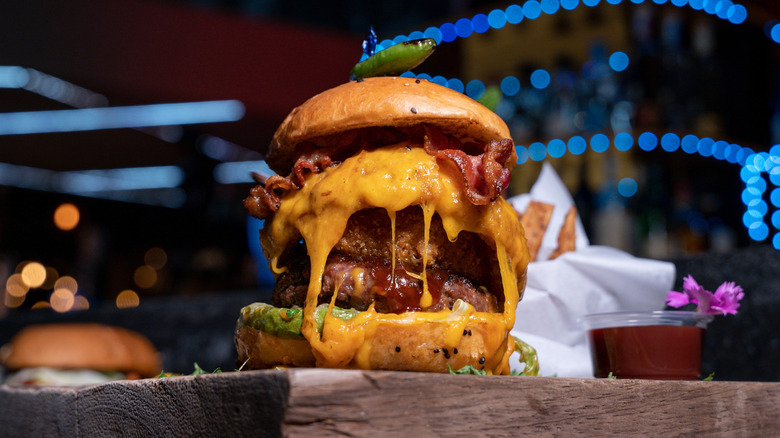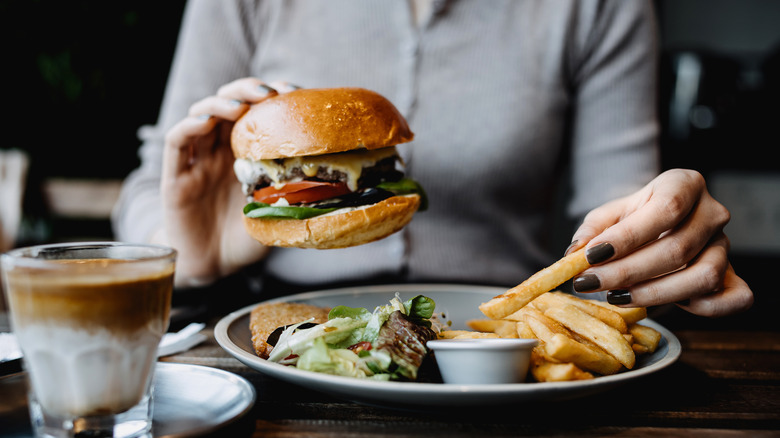Why Oversized Burgers Could Be A Potential Red Flag At A Burger Joint
A meal at a burger joint should be an all-around pleasant experience. The vibe is casual, the service is usually friendly, and then there's the star of the show: a hopefully mouth-watering patty secured between two buns. Essentially, the only way to ruin the experience is by being served a disappointing meal. While there are several red flags to watch for at a burger joint, one of the most glaring issues is an oversized patty.
To explain why this is such a critical problem, Food Republic spoke to David Davidov, creator of The Cooking Foodie. He explained that the fault of oversized burgers comes down to the fact that "big, thick patties often cook unevenly and can fall apart." After all, the weight of burger patties matters — it affects many aspects of cooking.
When you try to scale up the patty size, Davidov noted, "You'll also notice signs like doming or cracked edges, a sign that the meat was either overworked or too thick to cook evenly." In any dish involving ground beef, excess thickness creates potential cooking problems. While the interior may stay raw, the proteins on the outside form a tightly-formed crust. In small doses, such effects can be palatable, but large burgers begin to disintegrate before cooking is complete. Not to mention, the issues continue once the burger is served. "When the bun-to-meat ratio is off, it throws the whole bite out of balance," Davidov said. So when a burger joint serves an overwhelmingly large creation, the problems only multiply.
Oversized burgers complicate uniform cooking
Even the best fast food burger joints approach every step of the dish's creation with precision, from grinding fresh cuts of the right fat content to portioning and preparing the beef. To avoid structural issues, David Davidov advocates for burgers with perfectly balanced proportions. "I go for [5 to 6 ounce] patties, flattened to about ¾ inch thick," he said. Precisely formed patties — constructed through an optimal process — signal a dedicated commitment to quality.
In addition to the dimensions, Davidov explains that textural issues also arise when the meat is overworked, as excessive handling creates dense protein chains. Since shaping an extra-large patty requires more manual labor, all that forming and pressing only further weakens the structure. To minimize such problems, the best burger restaurants keep their patty formation brisk yet precise. Chefs leave out unnecessary ingredients in the filling, and even seasoning shouldn't be added until just before preparation, all to ensure the interior texture is just right.
Once the burger shape is finalized, Davidov suggests pressing "a small dimple in the center to keep the patty from puffing up." This way, the burger retains its ideal cylindrical shape, rather than expanding into a ball. From here, the patties will be ready to place on the grill or griddle, sizzling into a perfectly-sized burger fit for a memorable restaurant experience.


